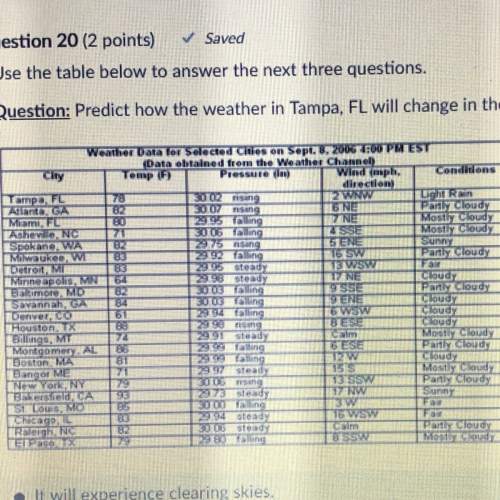
Physics, 29.08.2020 21:01 borgeschristoper694
Which one of the following is radical?
a. NH4+
b. CUSO4
c. CH4
d. NH3

Answers: 1


Another question on Physics

Physics, 21.06.2019 17:30
Date chapter motion and speed review part a. vocabulary review directions: write the terms that match each description below in thes complete the sentence in number 13. ich each description below in the spaces provided. the boxed letters will 1. equal forces acting in opposite directions (2 words) 2. occurs when an object's velocity decreases (2 words) 3. sum of all forces acting on an object (2 words) 4. total distance divided by total time (2 words) 5. name for the slant of a line on a graph 6. distance divided by time 7. a push or a pull exerted on a body or object 8. distance and direction of an object from its starting point 9. tendency to resist change in motion 10. measure of how far an object has moved 11. speed and direction of motion 12. rate of change of position at a specific point in time (2 words) 13. the rate of change in velocity is called motion and spe
Answers: 3

Physics, 22.06.2019 16:00
The electric potential v is constant everywhere within a certain region of space. which statement below is true? the choices are: the electric field is also constant (but not zero) within the region. a charged particle placed within the region will experience an electric force. the electric field is zero everywhere within the region. the electric field varies from place to place within the region.
Answers: 2

Physics, 22.06.2019 17:10
It's a snowy day and you're pulling a friend along a level road on a sled. you've both been taking physics, so she asks what you think the coefficient of friction between the sled and the snow is. you've been walking at a steady 1.5m/s, and the rope pulls up on the sled at a 32 ∘ angle. you estimate that the mass of the sled, with your friend on it, is 65 kg and that you're pulling with a force of 80 n .
Answers: 1

Physics, 22.06.2019 20:50
In a game of pool, ball a is moving with a velocity v0 of magnitude v0 = 15 ft/s when it strikes balls b and c, which are at rest and aligned as shown. knowing that after the collision the three balls move in the directions indicated and assuming frictionless surfaces and perfectly elastic impact (that is, conservation of energy), determine the magnitudes of the velocities va, vb, and vc.
Answers: 3
You know the right answer?
Which one of the following is radical?
a. NH4+
b. CUSO4
c. CH4
d. NH3...
a. NH4+
b. CUSO4
c. CH4
d. NH3...
Questions





Biology, 10.07.2019 18:50

Biology, 10.07.2019 18:50


Biology, 10.07.2019 18:50


History, 10.07.2019 18:50



Mathematics, 10.07.2019 18:50




Chemistry, 10.07.2019 18:50



English, 10.07.2019 18:50





